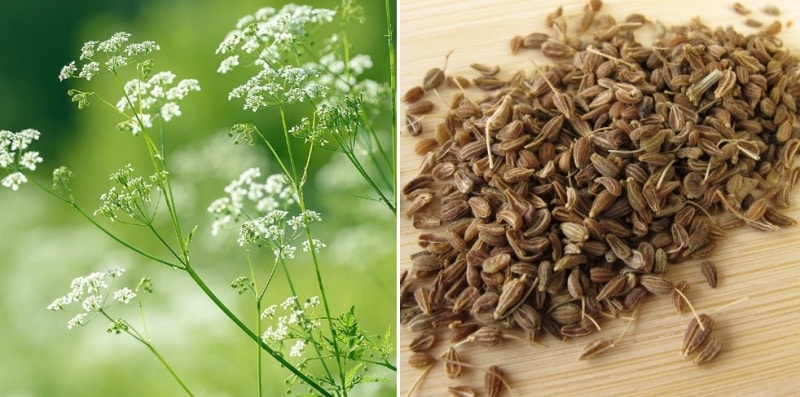A step by step guide to Growing Hydroponic Anise
You are in right place to learn growing hydroponic anise herb. Anise (Pimpinella anisum), also known as aniseed, is anise a perennial herb yes, which is a flowering plant member in the Apiaceae (parsley) family. It is native to the eastern Mediterranean region and southwest Asia. Anise is an herbaceous annual plant with feathery leaves and white blooms which flowers in the summer. Flowers are formed in thick characteristic umbels. These umbels consist of small brown seeds that have a sharp licorice flavour. The seed is an economic part of the plant that is usually used. Its leaves are used occasionally in soups and salads.
Anise, with its licorice flavour, can be utilized whole or ground to flavour many foods items as well as assists in the digestion of many types of foods. Anise is used in baked stuff from savoury to sweet, to stewed or baked fruits, even to vegetables. Aniseed tea is said to assist with colds and influenza. Anise is also utilized commercially to flavour teas, cough drops, and liqueurs. At maturity, it may grow to nearly 2 feet tall height and have bushy growth outwards to 18 inches or maybe more.

Growing the Herb Anise
The anise seedlings are soft and fragile and therefore do not like transplanting. It is the best choice to sow seeds directly into the hydroponic system in full sun or install grow lights. Anise is frail and fragile in nature for that reason; it needs protection from the strong wind. Anise can be planted indoors as well. Sowing in spring and again in autumn is preferred (in temperate zones), ½-inch deep, 12-inches apart seeds should be sown. You can germinate anise plants in various ways. You can raise the seeds in the soil and transplant them to the hydroponic system, or you can also germinate the seeds in the grow media. You can also germinate the seeds in a damp paper towel and then transplant them. Whatever works best for you is fine for your garden. Keep the system moist until seedlings appear. Water whenever seedlings dry out, preferably early morning or late afternoon. You can keep the system in bright, indirect light where temperatures are around 70 degrees Fahrenheit. Anise seeds will germinate approximately in 14 days when the temperature is at 70 degrees F, or 21 degrees C.
When transplanting, transfer the star anise seedlings up in individual grow pots when they are 3 to 4 inches tall in height. Use grows pot with drainage holes. Place them in bright, indirect light and water them using room-temperature water when the top layer of the grow media begins to dry.
You should not miss the Growing Watercress Hydroponically.
pH value required for growing hydroponic anise
You will have to maintain a slightly acidic pH value from about 5.8 to 6.4 for growing anise. And you will have to keep checking to make sure that the nutrient-enriched water in your reservoir has this maintained ph balance.
Lighting required for growing hydroponic anise
You will need good lighting conditions with the correct luminosity and spectrum to cultivate the anise plants. Experienced growers recommend a good amount of blue light for this type of herb, where metal halide lights can be a good choice when growing indoors.
Plant Pots
In hydroponics, it plant goes into a plant grow pot that’s where they set into a tray, table or tower or some other type of hydroponic structure. If you are having a deep water culture system, where the roots will sit directly in water, then you will have to place open plant pots with sufficient room for the roots to go through. If you have a drip or top to the bottom type of hydroponic system, you may just have to plant pots with a hole for water drainage at the bottom. You can also use the ebb and flow, hydroponic herbs DIY system like ones that can be used for hydroponic rosemary, hydroponic mint, and hydroponic chives and for growing green onions hydroponically.
The Nutrient solution for hydroponic anise
This is another interesting and essential part of having the correct method in place to grow hydroponic anise and any other hydroponic plans. You might have a lot of questions and doubts about what plants need. Well, to start with, they require high amounts of core nutrients such as nitrogen, phosphorus, and potassium. For anise particularly and other plants of the same family, experienced growers suggest high nitrogen to phosphorus ratio and a low to medium electrical conductivity ratio for the ideal growth. You can get this done simply by buying ready to use hydroponic nutrient solutions online which comes along user guide. Other tips comprise of having the facility of ventilation in order to avoid air stagnation this will encourage the plant growth. You should keep looking for any proof of bugs or any bacterial infiltration as precautions are better than cure.
Harvesting hydroponic Anise
When the umbels (flower heads) are full with completely developed brown seeds, cut off the heads earlier than they fall off. Store them in a dry place. Anise can be placed in direct sunlight for drying up any remaining moisture. When the seed heads are completely dry, eliminate husks and flower heads. Store them in airtight containers. Seeds used for the culinary, medicinal or cosmetic purposes, can last many years if stored appropriately. For propagation purposes, you will have to use the seed within a year. The green leaves can be cut whenever plant leaves are large enough and seeds may be harvested 1 month after flowers bloom.
You may also check the Tomato Farming in Summer.